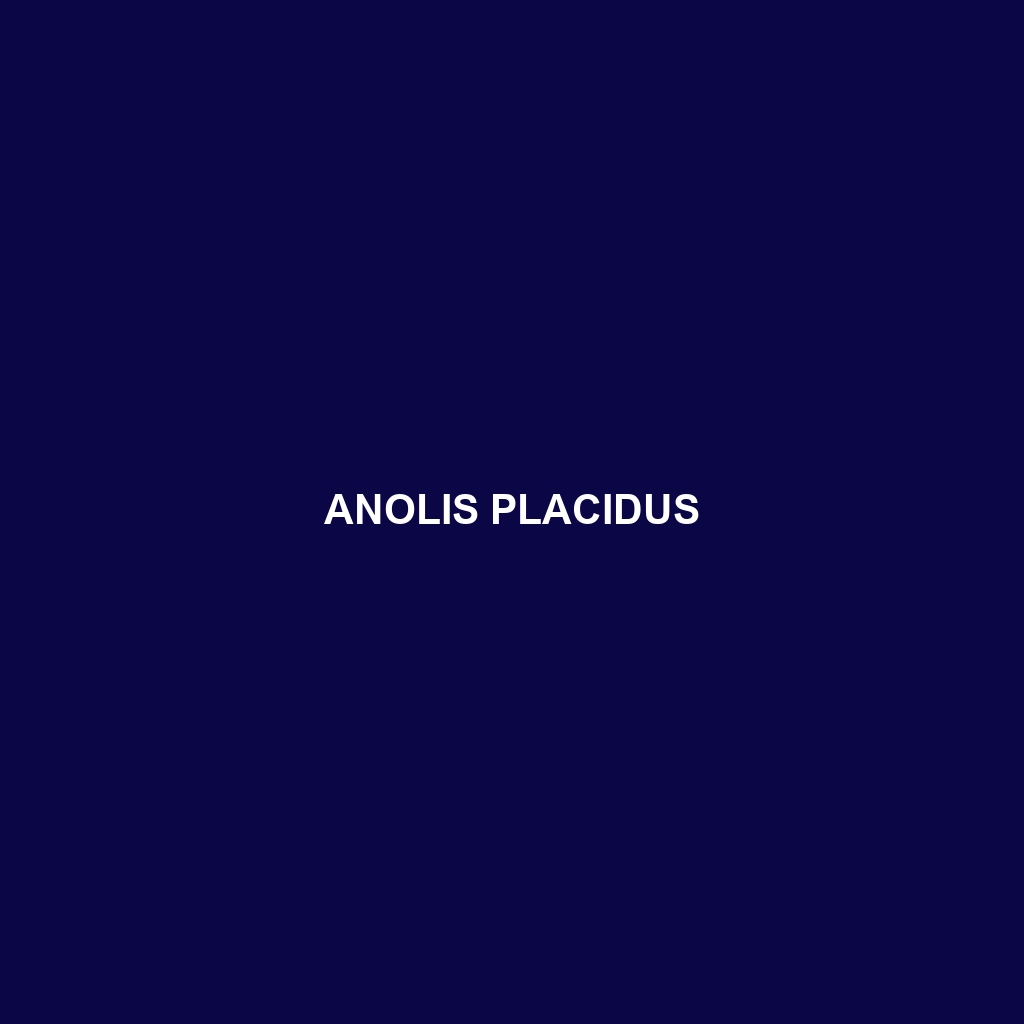Common Name: Anolis placidus
Scientific Name: Anolis placidus
Habitat:
Anolis placidus is primarily found in the lush environments of the Caribbean, specifically within the tropical rainforests of the Dominican Republic and Haiti. This species thrives in areas that offer ample foliage, allowing for their arboreal lifestyle. They inhabit both primary and secondary forests, often resting on branches or leaves where they are well camouflaged.
Physical Characteristics:
Anolis placidus is a medium-sized lizard, reaching approximately 5 to 6 inches in length. This species exhibits vibrant green coloration, which aids in its camouflage among the leaves. They have elongated bodies and a slender tail, with males showcasing a distinctive dewlap that they display during mating rituals. The unique morphology of Anolis placidus, combined with its color adaptation, makes it a remarkable subject for herpetology enthusiasts.
Behavior:
This species is primarily diurnal, meaning it is most active during the day. Anolis placidus is known for its territorial behavior, especially males who often engage in displays to ward off competitors. Their ability to leap between branches and their climbing skills contribute to their foraging strategies, making them agile hunters. Additionally, they are adept at using their environment to avoid predators, often remaining motionless to blend in with foliage.
Diet:
The diet of Anolis placidus consists mainly of small insects and other arthropods, making them important pest controllers in their ecosystem. They primarily feed on ants, beetles, and flies, using their sharp tongues to capture prey swiftly. Their feeding habits contribute to the ecological balance, as they play a role in regulating insect populations.
Reproduction:
Anolis placidus reproduces during the warmer months, typically from April to August. Males perform elaborate courtship displays to attract females, involving push-ups and dewlap displays. A female can lay multiple clutches of eggs, each containing one to two eggs. The eggs are typically buried in soil or leaf litter, where they incubate until hatching occurs, usually after 6 to 8 weeks.
Conservation Status:
The current conservation status of Anolis placidus is classified as ‘Vulnerable’ according to the International Union for Conservation of Nature (IUCN). Habitat loss due to deforestation and human encroachment poses significant threats to their survival. Conservation efforts are crucial to safeguard their natural habitats and support population recovery.
Interesting Facts:
Anolis placidus has a remarkable ability to change its skin color slightly to blend in with its surroundings, which enhances its camouflage and protection from predators. Additionally, this species is known for its vocalizations, which are used during territorial disputes and mating displays, making it an intriguing subject for researchers and nature enthusiasts alike.
Role in Ecosystem:
Anolis placidus plays a vital role in its ecosystem as both a predator and prey. By controlling insect populations, it aids in maintaining biodiversity and landscape health. Furthermore, as a food source for various birds and larger reptiles, this lizard contributes to the intricate food web within its habitat, underscoring its ecological importance.
